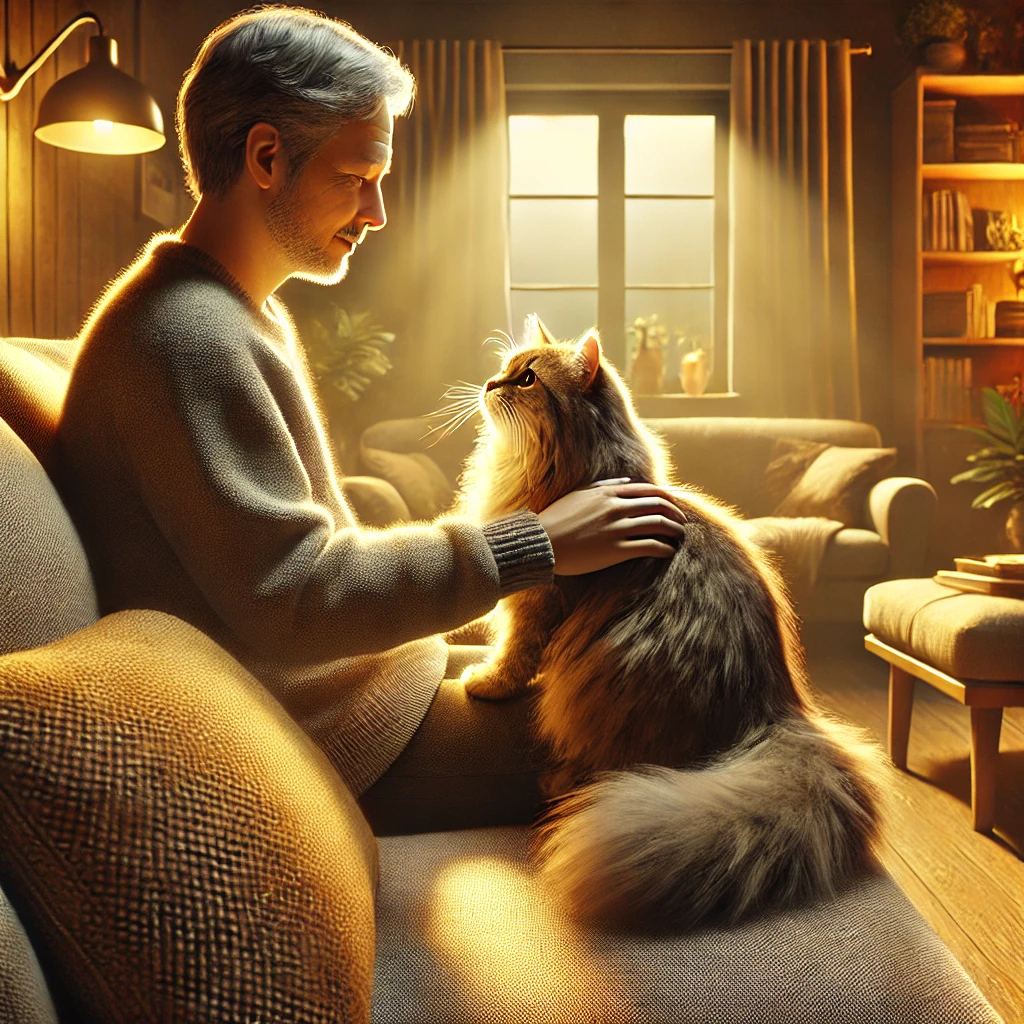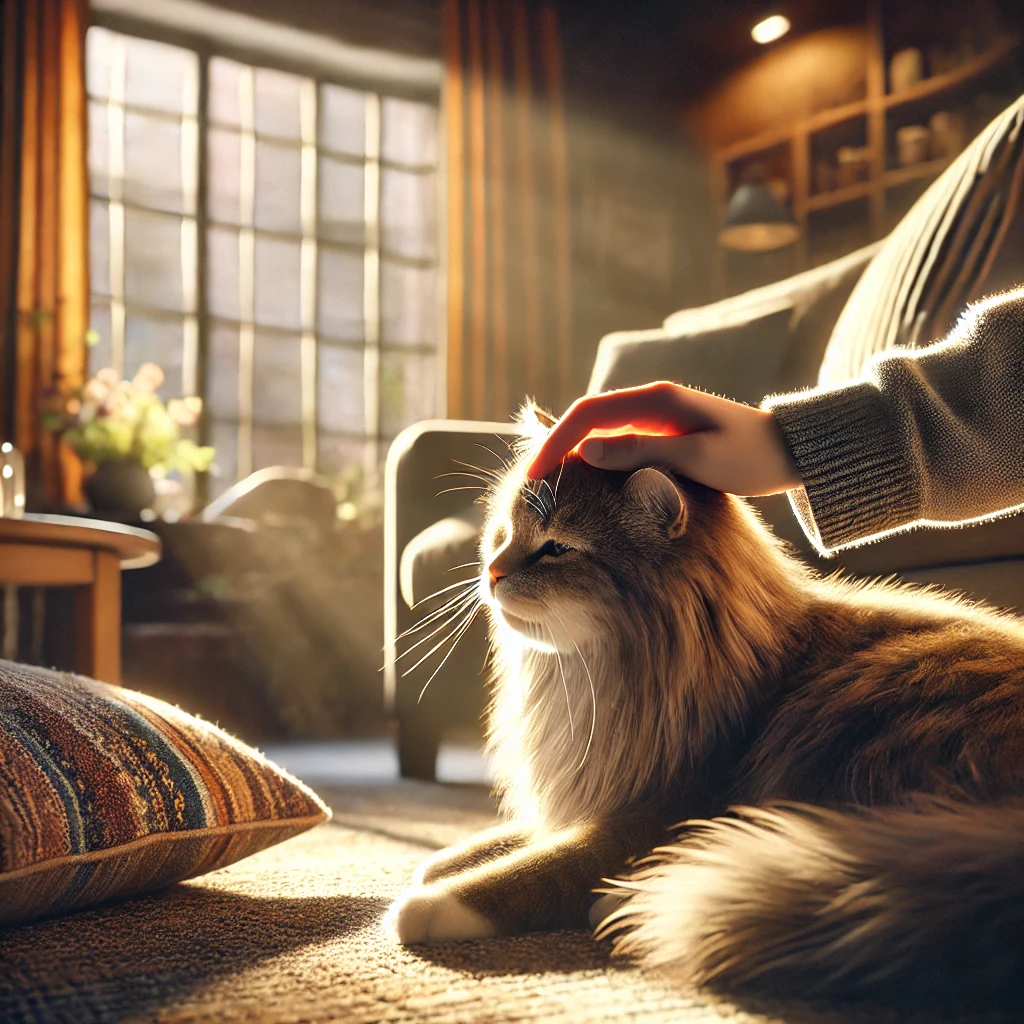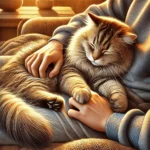Cats, often seen as independent and aloof, have a surprisingly rich and nuanced way of expressing affection. While their love language may differ from the overt enthusiasm of dogs, it is equally genuine and endearing. From subtle gestures like slow blinks to deliberate actions such as curling up next to you, cats weave their affection into everyday interactions.
Table of Contents
Understanding how cats show love can strengthen your bond and help you appreciate your furry friend’s unique personality. Cats are intuitive creatures; they pick up on human emotions and respond in ways that might seem understated but are deeply meaningful. Whether they’re purring contentedly in your lap or nudging their head against your hand, these actions carry significant emotional weight.
In this guide, we will explore the fascinating ways cats express their love, from body language to vocalizations and gifting behaviors. Each method sheds light on the complexity of feline affection, making it easier for you to recognize and reciprocate your pet’s love.
How Cats Show Affection Through Body Language
Cats communicate a lot through their body movements, and understanding these subtle signals can help you decode their affection. From the position of their tail to the way they look at you, every gesture has a meaning.
Purring: A Universal Sign of Comfort and Contentment
Purring is one of the most recognizable signs of a cat’s affection. This low, rumbling sound often occurs when cats feel safe and comfortable. When your cat curls up on your lap and purrs, it’s their way of telling you they feel at ease in your presence.
Interestingly, not all purring is related to contentment. Cats might also purr when they’re in pain or stressed, using the vibration as a self-soothing mechanism. However, in the context of affection, purring usually indicates happiness and trust.

Some experts believe that the vibrations from a cat’s purr can have a calming effect on humans, further solidifying the bond between owner and pet. The next time your cat purrs while lying close to you, take it as a heartfelt “thank you” for being a source of comfort.
Slow Blinking: The Feline Kiss
When a cat gazes at you and slowly blinks, it’s offering a gesture often referred to as a “feline kiss.” This behavior signifies trust and relaxation. Cats only perform slow blinks when they feel secure in their surroundings and with the people around them.
To return the sentiment, you can mimic the slow blink. Maintain eye contact with your cat and blink slowly to let them know you trust and love them back. This silent exchange can strengthen the bond between you and your feline friend.
Tail Movements: Decoding Their Unique Language
A cat’s tail can reveal a lot about its emotions. When your cat approaches you with its tail upright and slightly curved at the tip, it’s showing affection and happiness. This posture indicates a friendly mood and an invitation to interact.
Conversely, a tail wrapped around your hand or leg is another affectionate gesture. This is akin to a human hug, showing a desire for closeness and connection. By paying attention to your cat’s tail movements, you can better understand their emotional state and deepen your relationship with them.
Physical Touch as a Sign of Affection
Physical touch is one of the most obvious ways cats display affection. Though cats are often regarded as independent, they rely on touch to communicate trust and warmth.
Headbutting: The Ultimate Show of Trust
When a cat headbutts you, also known as “bunting,” it’s a profound display of trust and love. This behavior involves a cat gently bumping its head against your hand, leg, or even face. Cats have scent glands on their heads, and by headbutting you, they mark you with their scent, claiming you as part of their territory.
This gesture is a sign that your cat feels safe and bonded with you. It’s not only a form of affection but also a way for your feline friend to express their confidence in your relationship. Responding by petting them in return reinforces this mutual trust.

Kneading: A Throwback to Kittenhood
Kneading, or “making biscuits,” is a charming behavior where cats rhythmically push their paws against a soft surface, often your lap or stomach. This habit originates from kittenhood when they kneaded their mother’s belly to stimulate milk flow.
When adult cats knead you, it’s a sign of comfort and affection. This action releases soothing pheromones and signifies that they associate you with feelings of safety and contentment. While the behavior can sometimes be uncomfortable due to sharp claws, it’s a compliment and a testament to their trust.
Sleeping Next to You: Bonding Through Rest
Cats are at their most vulnerable when they sleep. If your cat chooses to nap next to you or on you, it’s a clear indication of trust and affection. By doing so, they signal that they feel entirely secure in your presence.
This behavior also fosters bonding. Sharing close proximity during rest periods strengthens your connection, much like cuddling in humans. It’s their way of saying, “You’re part of my inner circle.”
Verbal Cues That Cats Use to Express Affection
While cats aren’t as vocal as dogs, they do use an array of sounds to communicate affection. Understanding these verbal cues can deepen your appreciation of their unique way of connecting.
Meowing: Personalized Communication
Unlike other feline sounds, meowing is a behavior that cats reserve specifically for humans. Each cat develops a unique meow to communicate with their owner. This personalized vocalization can signal anything from a request for attention to an expression of love.
For example, a soft, drawn-out meow often conveys contentment or a desire to be near you. By paying attention to the tone and context of your cat’s meows, you can learn to interpret their needs and emotions more accurately.
Chirps and Trills: Happy Vocalizations
Chirps and trills are delightful sounds that cats make when they’re excited or happy. These high-pitched vocalizations are often directed at their favorite humans as a greeting or an invitation to interact.
These sounds originate from mother cats communicating with their kittens, making them inherently nurturing. When your cat chirps at you, it’s a playful and affectionate way of saying they enjoy your company.

Gifting Behavior: Love Tokens From Your Cat
Cats often express affection through gifting behavior, presenting you with tokens that may seem odd but hold meaning in the feline world.
Bringing ‘Presents’: Why Cats Share Their Catch
If your outdoor cat brings you a “gift,” such as a mouse or a bird, it’s their way of sharing their success and including you in their survival instincts. While this may seem unpleasant, it’s a high compliment in feline terms, as they view you as a trusted companion deserving of their bounty.
Indoor cats might replace these gifts with toys or other small objects they treasure. Accepting these presents graciously reinforces your bond with your cat.
Sharing Their Favorite Spots or Items
When a cat allows you access to their favorite lounging spot or toys, they’re showing affection through sharing. This behavior highlights their trust and willingness to let you into their safe space.
Cats are territorial creatures, so when they share, it’s a meaningful gesture of connection. Take these moments as a sign that your feline friend holds you in high regard.
Conclusion: The Many Faces of Feline Love
Cats express affection in diverse and fascinating ways, blending subtle gestures with deliberate actions. From the soothing purr to the playful chirp, each behavior tells a story of trust, contentment, and companionship. By learning to recognize these signs, you can strengthen your bond and create a deeper understanding of your cat’s unique personality.
Whether they’re nuzzling you with their head, blinking slowly, or curling up beside you, these moments are filled with love and trust. In return, showing patience, care, and affection will help your cat thrive emotionally, making your relationship all the more fulfilling.
Q&A Section: Your Questions About Cat Affection Answered
Why do cats knead only certain people or objects?
Cats knead based on their comfort and attachment levels. They may knead a specific person if they associate them with safety and warmth, akin to their bond with their mother. Kneading objects often stems from texture preferences, such as soft blankets or cushions.
Do cats show affection differently at different ages?
Yes, a cat’s age can influence how they show affection. Kittens are more playful and might express love through active behaviors like chasing and pouncing. Adult cats tend to be more reserved, using subtle gestures like slow blinks and cuddling. Older cats often prefer quiet companionship, sleeping beside their favorite person.
Why does my cat ignore me sometimes?
Cats are independent animals with varying moods. Ignoring behavior doesn’t necessarily mean they don’t love you. It’s their way of seeking personal space. Providing affection when they initiate it strengthens the bond without overwhelming them.



